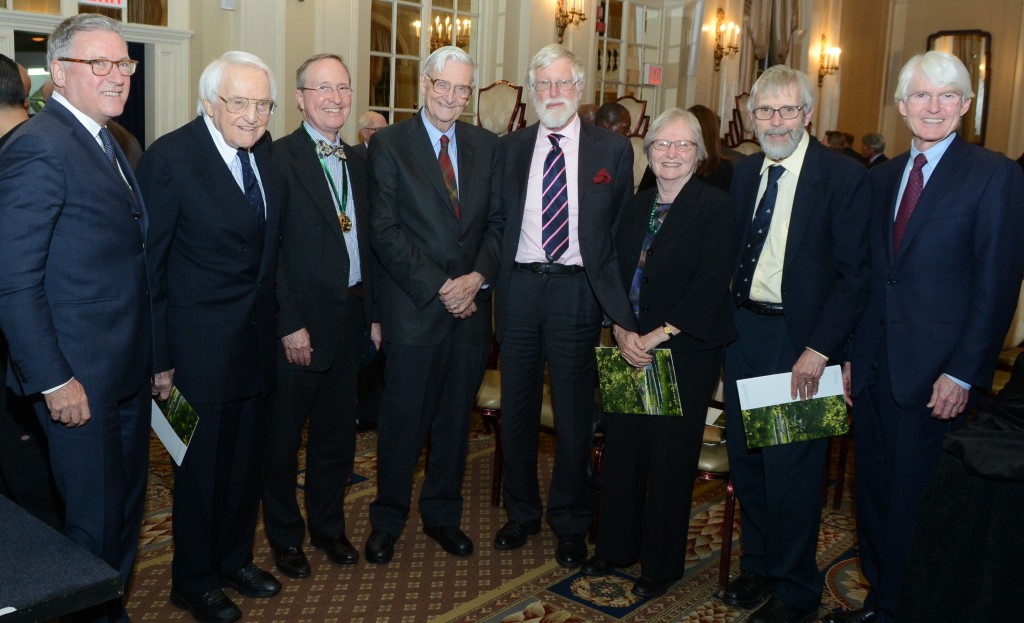Emerald Planet: Honoring the Work of Dr. Thomas E. Lovejoy
Posted in Personalities in Science on December 24, 2014 by Matt Newman

This past November, some of the most influential botanists and conservationists in modern science gathered together for The New York Botanical Garden’s 123rd Annual Meeting, joining CEO and The William C. Steere Sr. President Gregory Long and the NYBG’s Board Members for a recap of the past year’s successes—as well as the Garden’s plans to come. But top billing during this event went to a person who has not only served as an integral member of the NYBG Board since 1986, but proven an enormously significant figure in global ecology initiatives and conservation efforts.
For many, the highlight of the evening was Thomas E. Lovejoy, Ph.D., who received the NYBG’s Gold Medal—our highest honor—for his accomplishments within and dedication to biodiversity and plant science.
Given only to those who effect great accomplishments in botany, horticulture, or science education, few are as qualified to receive such a medal as Tom Lovejoy, who in 1979 created the Minimum Critical Size of Ecosystems Project, a program that brought the importance of biodiversity to the forefront of conservation studies and informed the public of its significance. To most, he created the study of biodiversity when he coined the term in 1980. Since then, his legacy in the plant science community has only grown, informing the work of scientists the world over. But despite his globetrotting experiences and discoveries over the past several decades, it’s here at the Botanical Garden that he finds some of the most important work being done.
“It all starts with plants,” he said. “There are not a lot of [botanical gardens] in the world, but an awful lot of biology, conservation, and ecology would not be possible without the works that these institutions do. And it’s not just the science. It’s also the outreach—the ability to open someone’s eyes to the beauty and wonder of a plant. Today they are more important than ever.
“… No other institutions in the world are better poised to lead the restoration of the emerald planet than botanical gardens.”
Today, we thank Dr. Lovejoy for his many decades of service: to the Garden, to the environment, and to the future of the world at large. And, of course, we look forward to many more years of his pioneering works.

